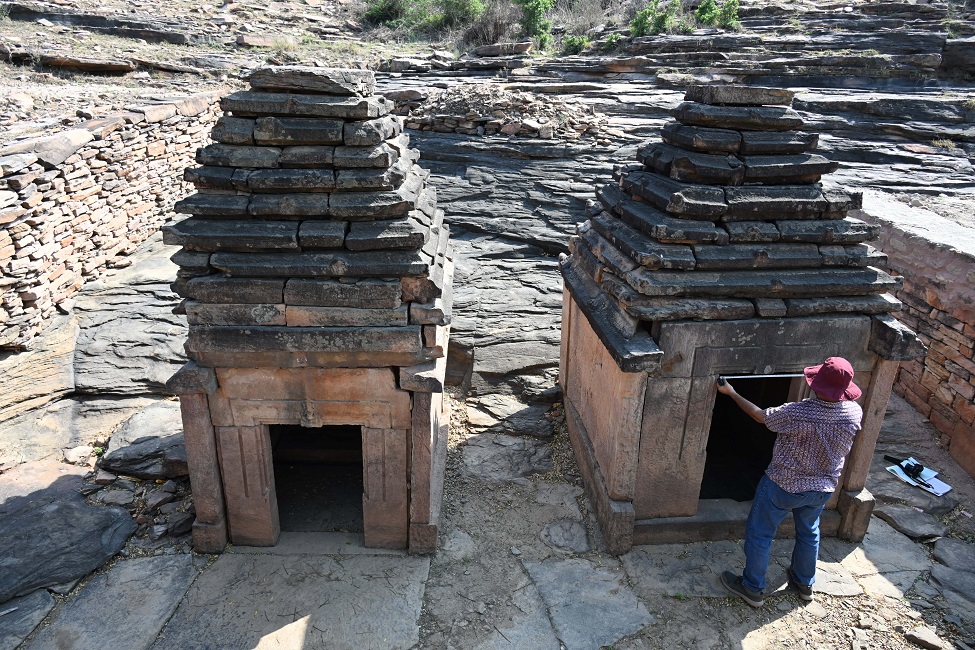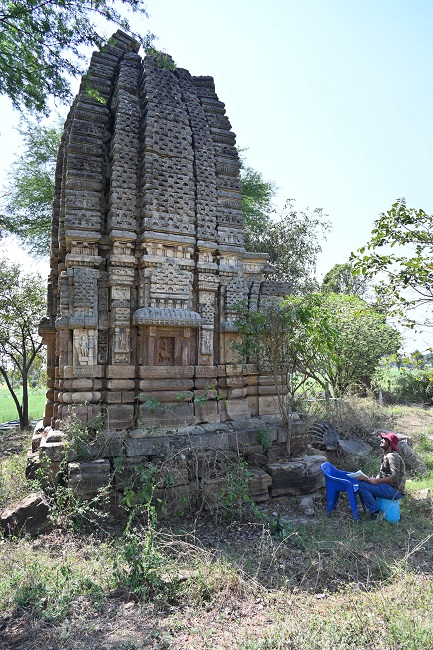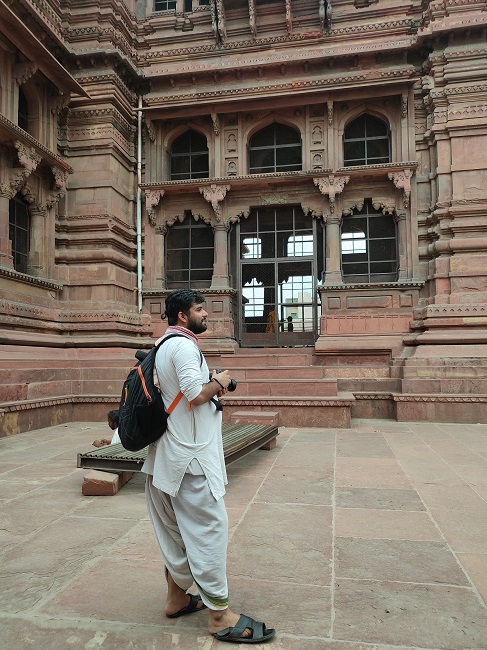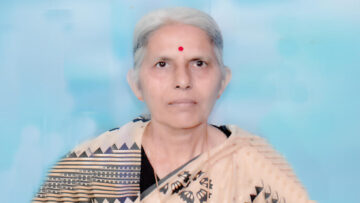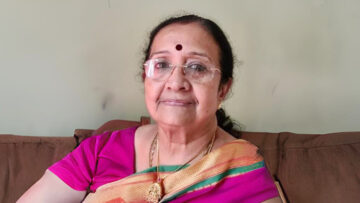The land of Braj is surrounded by reminders of a young Krishna, carefree and in love. Krishna himself says to his friend Uddhav, “Udho, mohe Braj bisarat nahi” (“ I cannot forget Braj, Udho”). For Sushant Chaitanya Bharti too Braj is unforgettable. He is a Conservation Architect and has done his post-graduation from the School of Planning & Architecture, New Delhi. His main area of research is on the ‘Cultural Heritage of Braj’ and ‘Indian Temple Architecture’. He has immersed himself in this study for seven years now.
As a child, were you exposed to a lot of ancient architecture, and was it more of the Nagara style or the Dravida style? How did it shape your journey into architectural conservation?
Honestly, I had no serious inclination towards architecture since my childhood and I had no idea at all that I would develop such a serious interest for the same later on. Yes, I was fascinated by Indian history, but not architecture specifically. This development happened while I was in 11th grade when I had to make an “escape plan” for myself as my parents, like others at that point in time, wanted me to pursue my career in engineering.
After passing my 12th CBSE board examination, I entered the architectural program, where slowly I found that I have a corner in my heart that has a deep interest and love for ancient Indian architecture, especially temples. As I was from the north and, due to the successive invasions, we don’t have many temples to look around in the region, I was pushed to read about books by scholars like Stella Kramrisch, Vasudeva Sharan Agarwal, Madhusudan Dhaky, Michael Meister, Adam Hardy, etc. I also started traveling extensively since my graduation days, which led to a strong foundation of temple architecture in my mind, on which I’m still progressing to date.
Further in my graduation days, I realised that I had to pursue something more to keep my thirst alive, and this led me to the Architectural Conservation Program at the School of Planning and Architecture (SPA), New Delhi which is the first and premier institute in India in the mentioned field. My interest in ancient history along with my architectural curiosities led me to the doors of SPA Delhi, which played a very important role in shaping my mind to understand the rich architectural heritage of India.
(Figure 1: Temple Documentation at Nareswar, Gwalior)
You have mentioned in your writing that, in retrospect, the lines between scripture and folk tradition blur in the case of Sanjhi art and worship. Are there other instances of this convergence that you have found in your studies of ancient Indic architecture?
First of all, I should mention with full respect that this sort of understanding within me where you try and study literature with folk culture was developed by Prof. Nalini Thakur, who taught me at SPA Delhi. She has been instrumental in developing and nurturing my love for Braj academically.
The instance of Sanjhi art that has been mentioned in the question is something I have discovered a lot of times in our Indian architectural traditions too, and let me quote a very prominent answer from the Braj region, which has been my area of research for the past seven years.
Technically, all the temples in India have Shikhara or Vimanam on the top of Garbhagriha, which marks the striking figure of a temple duly mentioned in all the traditional architectural texts, but in Braj, the case is totally opposite. We don’t find any towering structure over the Garbhagriha in Braj, as its elimination is supported by regional religious principles, which makes the temple a flat roofed structure often termed as Haveli or a Kunj which is more like a house than the traditional orthodox temple we see in our ancient history.
Such elimination of texts in relation to practices is a common thing observed in many places in India and has to be studied in greater detail by the young generation.
(Figure 2: Temple Documentation at Umrai , MP)
What are your thoughts on recent environmental conservation efforts? Do you think that this movement can be guided by approaches such as that of Shri Narayan Bhatta with sacred groves?
Unfortunately, in today’s time, we don’t have any sort of prominent environmental conservation activity or awareness happening in the region of Braj. There are some but they are very few in numbers to lead this battle effectively. The excessive construction in the name of development is continuously threatening the region and is an alarming situation for the inhabitants there.
I completely agree that if someone takes the initiative to do such a pious act for Braj, it has to be done in alignment with the mood of prominent personalities like Shri Narayan Bhatta Ji, who literally established the cultural landscape of Braj with the help of rich flora and fauna evidently visible in his text Braj Bhakti Vilasa.
Along with him, eminent personalities like Hariram Vyas, Swami Haridas, etc. also had a strong voice in the medieval era about environmental conservation, who are to be studied well with a different lens and are required for Braj in today’s context.
What is the link between architectural conservation and environmental conservation? How do traditions of art and worship play a role in these fields?
Well, the link is really complicated yet simple, and they are both interrelated. Architectural conservation as well as environmental conservation go hand in hand. For example, if one has to conserve a house made up of Deodar trees in hills, he needs to have a good supply of the Deodar trees in order to conserve or restore the same. This means that one has to ensure a proper flow of Deodar, which requires someone to keep a strong check on the conservation of the Deodar species so that it’s growing abundantly for the future needs.
The tradition of arts and worship is also equally important in the process of environmental conservation. For many centuries, the art of Sanjhi preserved the alluvial soil of the Yamuna floodplain, which was used to make the platform in the making of Sanjhi art. Unfortunately, today the scene is totally different and upsetting, as the alluvial soil bases have been replaced with the wooden artificial platform.
Have you found examples of recent-day architecture that draws inspiration from the plans of ancient temples and the Vastupurushamandala?
Well, unfortunately, it’s a big no if you are proposing this question against the recent construction norms we see in northern India. There are some examples, but the influences are really negligible.
But the scene is totally opposite in South India from what we see in North India. People have a good sense of traditional values, which makes them adamant in the context that the ancient values of our glorious heritage are not taken for granted.
I think the whole difference in mentality we see in the North and South is due to the loss of our consciousness which is directly proportional to the loss of temple heritage in Northern India, which happened for more than five centuries due to successive and uninterrupted invasions.
What are the ways in which an appreciation and respect for ancient architecture can be brought to the younger generation, especially in urban areas? What is the role that they will play in conservation efforts?
That’s a very good question to think about, as the recent trends are really alarming. I guess the younger generation has been curious since their school days, so they are prepared thoroughly in order to contribute something more to the scholarship related to ancient Indian architecture. To create curiosity and interest in school days, schools should help engage students with eminent personalities, professionals, scholars etc. who are associated with the respective field.
The sense of awareness, along with the sense of preservation, has to be kept going so that the young generation learns to respect and appreciate our rich Indian heritage. Once they do so they will be some of the really sensitive professionals in the field who will keep a balance between the old and new in preserving the heritage to inspire the future generations to come.
What is the architectural heritage of Braj and what contribution does it have in terms of temple architecture?
The architectural heritage of the Braj region is extremely rich and diverse. Unfortunately, as I have mentioned previously, we have very rare ancient remains of the architectural heritage this region possessed in the form of relics which are scattered all over the globe and are placed in various museums.
The maximum output happened after the medieval era during the Mughal epoch which led to the revival of construction activities in the region with a high-profile Rajput alliance in the presence of Raja Man Singh of Amber. Braj has a whole collection of architectural diversity which can be ascribed to religious, residential, defensive etc.
If we especially look into the area of temple architecture which developed in the region, its journey and development is really fascinating. The whole new temple vocabulary which developed in the Mughal era gave a new output in terms of temple architecture which was the amalgamation of eastern Indian temple traditions with the northern Indian temple traditions respecting the current Mughal sentiments. It is something which has not been seen at the same time in any other part of India.
(Figure 3: Documentation at Govind Dev Temple , Vrindavan)
How did you try and link the food tradition of Braj with the broad topic of Cultural Heritage?
Braj is a land of temples and actually they are the main custodian as well as guardian of cultural heritage of the region. Without temples you can’t assume and think of any sort of an environment where the tangibles and intangibles can flourish. Hence with the same idea I tried to document the food traditions (Prasada) of Braj region.
The kitchen traditions of the temples in Braj region are an unknown arena for many and have many interesting attributes ranging from vocabulary, aesthetics, literature etc. Hence, I tried to do that in my fullest capacity for some examples in the vicinity of Braj.
Disclaimer: The opinions expressed in this article belong to the author. Indic Today is neither responsible nor liable for the accuracy, completeness, suitability, or validity of any information in the article.


